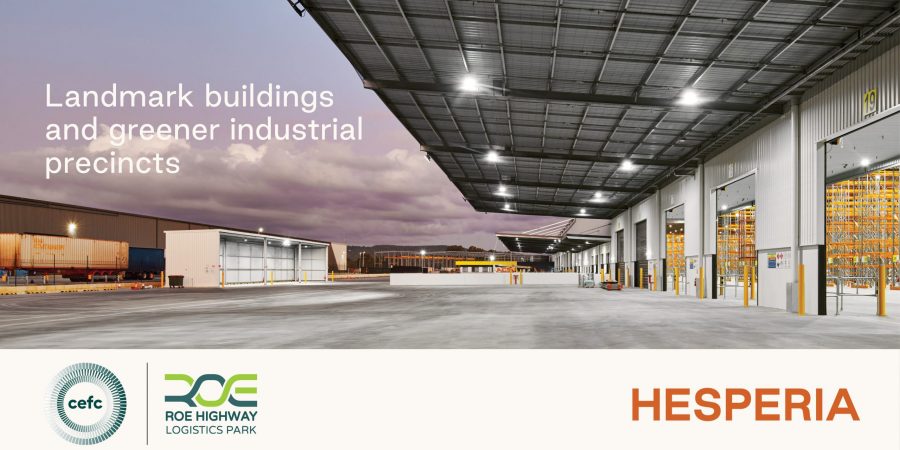Landmark buildings and greener industrial precincts
January 16, 2023

As Australia targets a net zero future by 2050 how can the building and construction sector push emissions reduction further than before? The CEFC has worked with Western Australian developer Hesperia to tackle hard-to-abate emissions through the use of low emissions construction materials including low carbon concrete.
“We’re very proud to have established Hesperia as the first B-Corp in the property industry. We see our business as a vehicle for improving the places where we live and work in terms of environmental, social and economic outcomes. We feel it is important to take action now rather than some point in the future.”
– Ben Lisle, Managing Direcor
Decarbonising construction in the race to net zero
As a thriving industry that employs many Australians and adds significantly to the economy, it is critical that the building and construction sector makes the transition to lower emissions as smoothly as possible.
The building and construction sector accounts for 39 per cent of global emissions and represents a great opportunity to help Australia transition to a low emissions economy. Significant progress has already been made to reduce the sector’s operational emissions. That makes embodied carbon – responsible for 28 per cent of emissions from the building and construction sector globally – the next frontier in the task to decarbonise the sector.
The investors
Hesperia: ROE developer and manager Hesperia has extensive experience across commercial, industrial, residential, retail and hospitality projects. The Hesperia name, meaning ‘western land’, reflects the company’s WA heritage and commitment to the state, drawing on best practice in urban design and sustainability. ROE is WA’s first 6 Star Green Star facility.
CEFC: The CEFC committed up to $95 million in senior project finance to the ROE development, its first direct investment in the property sector focused solely on Scope 3 emissions outcomes, using low carbon concrete as a key factor in the carbon neutral construction. The CEFC finance was repaid in December 2022.
Making carbon neutrality a reality
Roe Highway Logistics Park (ROE) – a rail-side industrial development located nine kilometres from Perth Airport – is the largest premium industrial estate to be established in Perth in more than a decade. ROE features the first 6 Star Green Star accredited industrial warehouse facility in Western Australia and is seeking to become Western Australia’s first carbon neutral industrial estate.
The Hesperia strategy for ROE was to achieve lifetime carbon neutrality for the development. Hesperia minimised the carbon footprint of ROE by maximising the use of recycled and sustainable materials, maximising energy efficiency and maximising the use of renewable energy. This included using ENVISIA concrete in the foundations of three warehouses. Data analysis of the solar and energy use of each of ROE’s tenanted warehouses is also helping determine peak periods of power draw, to inform decisions on solar and battery sizing for each tenant.
The approach taps into growing demand from tenants, owners, investors and communities for developments that cut lifetime emissions and lift sustainability outcomes.
“The nature of industrial development is rapidly changing, with purpose-built environmentally sustainable facilities now top of the list for clients who need modern warehousing and logistics facilities. We believe that demonstrating leadership through new approaches to developing industrial estates is the best way to help increase the pace of change and a faster transition to carbon neutrality in this important part of the property sector.”
– Ben Lisle, Managing Director
First published in CEFC Investment Insights, December 2022 edition.